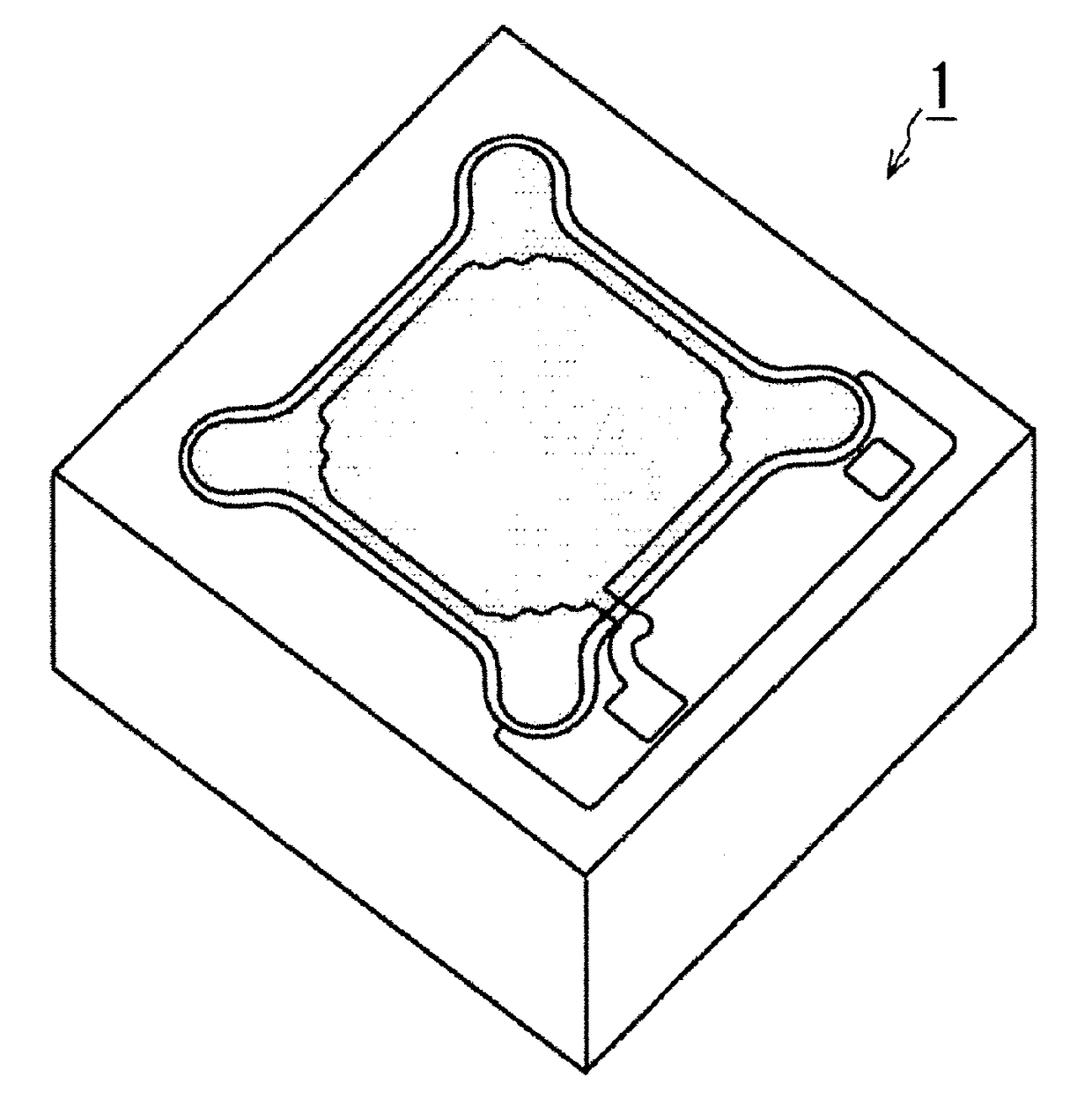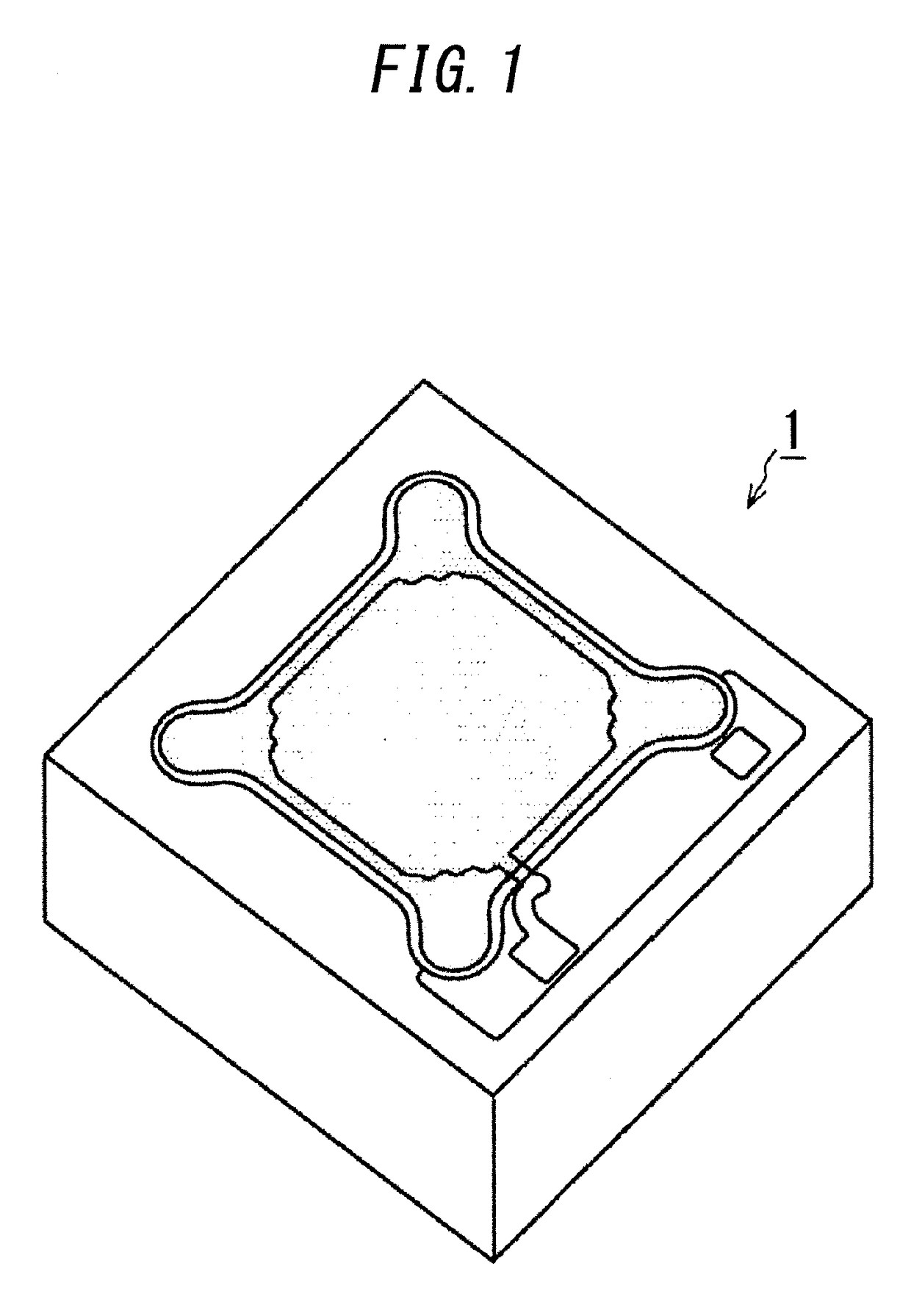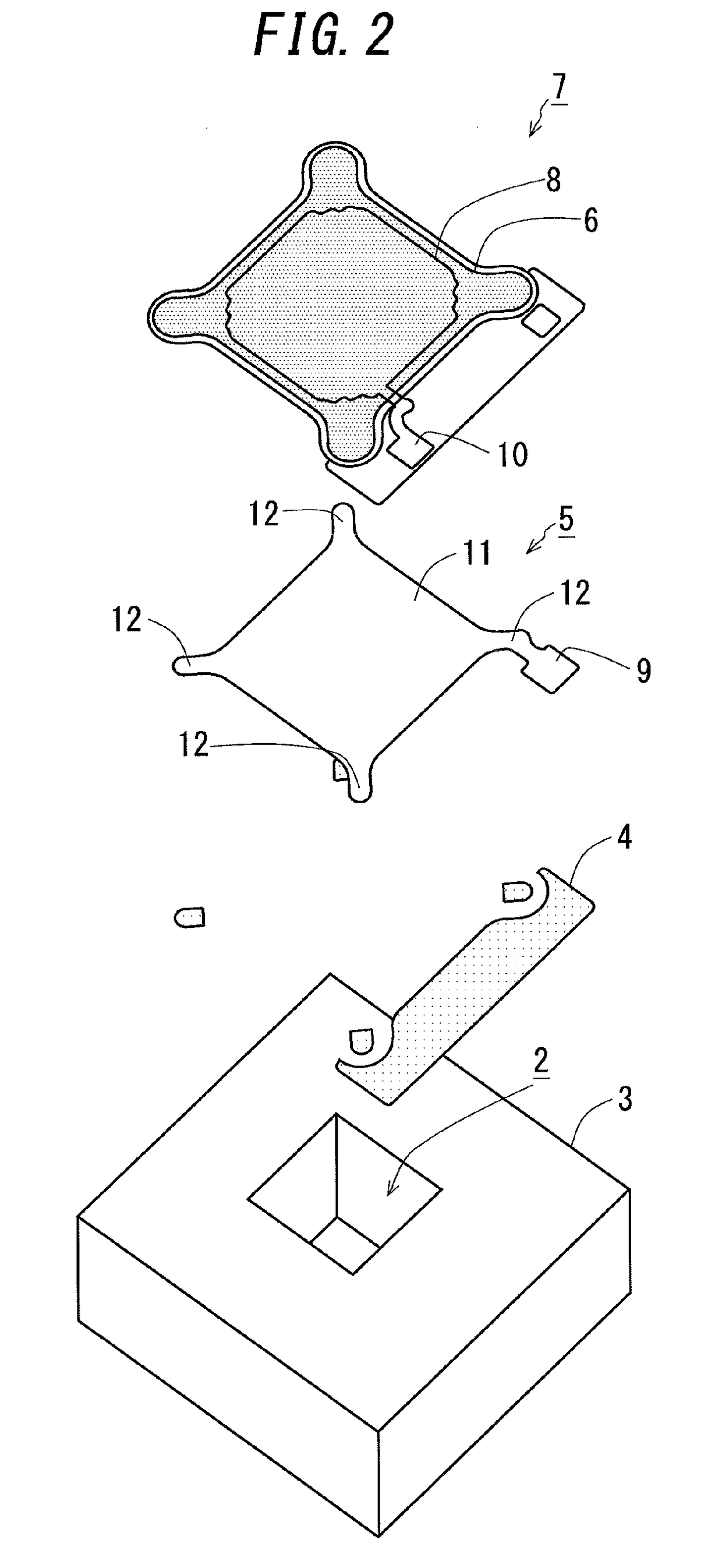Capacitance type transducer and acoustic sensor
a technology of capacitive transducer and acoustic sensor, which is applied in the direction of semiconductor electrostatic transducers, diaphragm construction, instruments, etc., can solve the problems of vibration electrode film deformation, inconvenience, deterioration of frequency characteristics, etc., to prevent vibration electrode film damage, suppress excessive deformation of vibrating electrode film, and maintain favorable frequency characteristics
- Summary
- Abstract
- Description
- Claims
- Application Information
AI Technical Summary
Benefits of technology
Problems solved by technology
Method used
Image
Examples
first embodiment
[0081]Hereinafter, embodiments of the invention of the present application will be described with reference to the drawings. The embodiments described below merely represent aspects of the invention of the present application and are not intended to limit the technical scope of the present invention. While the invention of the present application can be applied to all electrostatic transducers, a case where an electrostatic transducer is used as an acoustic sensor will be described below. However, a sound transducer according to the present invention can be used as sensors other than an acoustic sensor as long as a displacement of a vibrating electrode film can be detected. For example, in addition to a pressure sensor, a sound transducer according to the present invention may be used as an acceleration sensor, an inertial sensor, and the like. In addition, a sound transducer according to the present invention may be used as elements other than a sensor such as a speaker which conve...
second embodiment
[0117]Next, a second embodiment according to the present invention will now be described. In the first embodiment, an example has been described in which, when the protruding section 17b penetrates through the pressure release hole 15b of the vibrating electrode film 15 to close the pressure release hole 15b and excessive pressure is applied to the vibrating electrode film 15, the penetration of the pressure release hole 15b by the protruding section 17b is canceled and the entire pressure release hole 15b is exposed.
[0118]In contrast, in the second embodiment, an example will be described in which a protruding section of a back plate covers a pressure release hole of a vibrating electrode film in a state of normal use prior to the vibrating electrode film deforming significantly and the protruding section separates from the pressure release hole when excessive pressure is applied to the vibrating electrode film.
[0119]Actions of a pressure release hole 25b of a vibrating electrode f...
third embodiment
[0124]Next, a third embodiment according to the present invention will now be described. In the third embodiment, an example will be described in which a protruding section is provided on a side surface of a back plate and, when excessive pressure is applied to a vibrating electrode film, a gap between the protruding section and an end surface of the vibrating electrode film increases to release pressure.
[0125]Actions of vibrating electrode films 35, 45, 55 and protruding sections 37b, 47b, and 57b of back plates 37, 47, and 57 according to the present embodiment will be described with reference to FIGS. 12A-12C. FIG. 12A is a diagram showing actions of the vibrating electrode film 35 and the protruding section 37b of the back plate 37 according to the present embodiment when excessive pressure is applied to the vibrating electrode film 35. FIG. 12B is a diagram showing actions of the vibrating electrode film 45 and the protruding section 47b of the back plate 47 according to the pr...
PUM
| Property | Measurement | Unit |
|---|---|---|
| inclination angle | aaaaa | aaaaa |
| inclination angle | aaaaa | aaaaa |
| distance | aaaaa | aaaaa |
Abstract
Description
Claims
Application Information
 Login to View More
Login to View More - R&D
- Intellectual Property
- Life Sciences
- Materials
- Tech Scout
- Unparalleled Data Quality
- Higher Quality Content
- 60% Fewer Hallucinations
Browse by: Latest US Patents, China's latest patents, Technical Efficacy Thesaurus, Application Domain, Technology Topic, Popular Technical Reports.
© 2025 PatSnap. All rights reserved.Legal|Privacy policy|Modern Slavery Act Transparency Statement|Sitemap|About US| Contact US: help@patsnap.com



